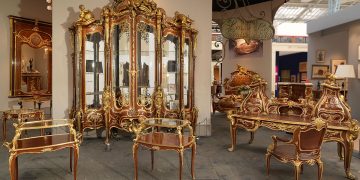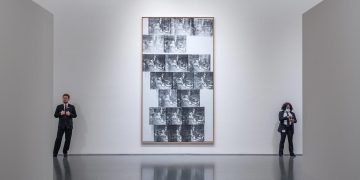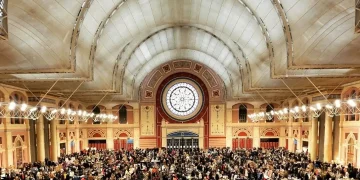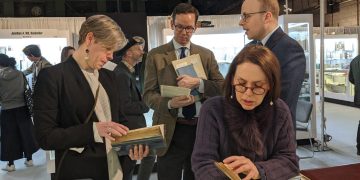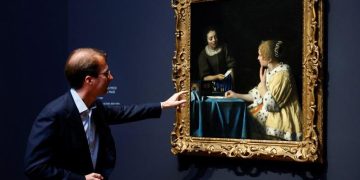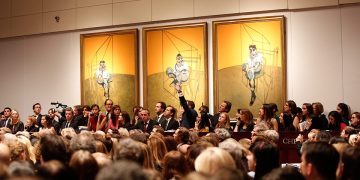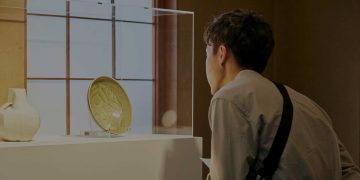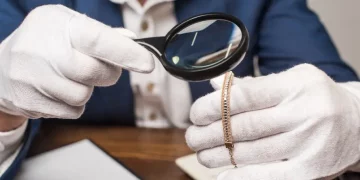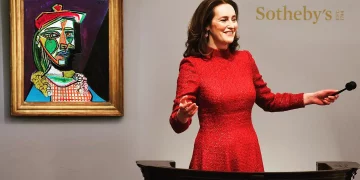The world of art, antiquities, and rare collectibles is often viewed as a separate entity from the more public-facing aspects of cultural and artistic presentations. However, behind the scenes of exhibitions in museums and galleries, private collectors play a crucial role in shaping what we see and how we experience these exhibitions. Collectors do not just acquire items for personal enjoyment; they can actively influence the design and curation of exhibitions. Through their preferences, acquisitions, and the way they engage with institutions, collectors are key players in determining the cultural narrative, aesthetic direction, and thematic focus of exhibitions.
This article explores how private collectors shape exhibitions through their collecting habits, preferences, and the nature of their acquisitions. It examines the collaboration between collectors and curators, how collectors contribute to the development of exhibitions, and how their influence extends beyond the simple act of lending or donating items to museums. Through the lens of collectors’ personal tastes and interests, we will look at how exhibitions are influenced by the objects they choose to acquire and how these choices affect the cultural landscape.
The Role of Collectors in Shaping Exhibitions
Private collectors have long been an integral part of the art world, often acting as patrons, donors, and sources of inspiration for exhibitions. Their collections provide curators and museum professionals with access to rare and valuable items that help create exhibits with strong narratives and visual appeal. However, the impact of collectors extends beyond just the objects they own. Their involvement in the exhibition process can shape everything from the selection of themes to the manner in which artworks are displayed.
Influence on Exhibition Themes and Narratives
Collectors are often deeply passionate about specific themes, periods, or artists. This passion translates into the collections they build, which in turn influences the themes of exhibitions. For example, a collector who is focused on early 20th-century European art may have a collection that includes works from the Fauvist, Cubist, and Surrealist movements. When this collector lends their collection to a museum, curators are tasked with designing an exhibition that centers around this theme.
The selection of works for an exhibition is not simply an objective process; it is heavily influenced by the collector’s perspective on what is significant or worthy of display. For collectors with a deep expertise in a specific field, such as contemporary photography or ancient Greek pottery, their knowledge can drive the direction of exhibitions, helping curators build a comprehensive and historically accurate narrative. This collaboration between collectors and curators leads to exhibitions that often have a clearer focus and a stronger thematic thread.
Collectors often serve as consultants or advisers during the curatorial process. Their specialized knowledge of specific movements, periods, or artists can help curators build more informed and cohesive exhibitions. Collectors’ deep understanding of the context and history of the objects in their collections helps museums produce exhibits that are both educational and engaging for the public.
The Influence of Collectors’ Tastes and Preferences
Collectors are often drawn to specific objects based on personal taste, historical importance, or the perceived aesthetic value of the items. This subjectivity influences the objects they acquire and, consequently, the types of exhibitions they may be invited to participate in or influence. For instance, a collector with a strong preference for minimalist sculpture may choose to amass works from artists like Donald Judd or Dan Flavin, which will in turn influence the curating of an exhibition.
The personal preferences of collectors can sometimes lead to unique and unexpected exhibition designs. In some cases, private collectors may work directly with curators to create exhibitions that reflect their specific interests. For example, a collector who has amassed a significant collection of early 20th-century furniture might suggest an exhibition that explores the design trends of that period. In this case, the collector’s preference for specific styles and designers would influence the overall design, layout, and aesthetic tone of the exhibition.
Moreover, some collectors may actively seek out rare, niche, or experimental pieces, encouraging museums to display items that otherwise might not be included in more mainstream exhibitions. This creates space for innovation and creativity within the curatorial process. Curators are often drawn to collectors whose tastes challenge conventional thinking, and these exhibitions may ultimately break new ground in terms of design and approach.
The Acquisition Process and Exhibition Design
Private collectors play an essential role in the acquisition process for museums and galleries. When museums seek to expand their collections, they often rely on collectors to lend or donate works of art. However, the acquisition process is not just about obtaining objects; it also involves the careful consideration of how those objects will be displayed. Curators and collectors must work together to ensure that newly acquired items are presented in a way that highlights their significance and aesthetic value.
For example, when a collector lends a collection to a museum, the curator must decide how to integrate these objects into the existing exhibition space. This decision often depends on factors such as the size and scale of the collection, the condition of the objects, and the overall narrative of the exhibition. The collector’s input is valuable in ensuring that the objects are displayed in a manner that does justice to their historical or artistic importance.
Collectors also influence the design of exhibitions by providing curators with unique items that fill gaps in existing collections. These items may include rare or historically significant pieces that museums are otherwise unable to acquire through traditional channels. The inclusion of such objects often leads to the rethinking of exhibition layouts or themes, as curators must consider how to best integrate the new items into their existing narrative.

The Collaboration Between Curators and Collectors
The relationship between curators and private collectors is one of collaboration and mutual respect. While curators bring their expertise in exhibition design, storytelling, and historical context, collectors bring specialized knowledge about their collections and the objects within them. This partnership is essential for creating exhibitions that are both informative and engaging for visitors.
The Role of Collectors as Advisors
Many collectors are not just passive lenders of objects but active participants in the curatorial process. As advisors, collectors provide invaluable insights into the history, context, and significance of the objects they own. Their intimate knowledge of the items allows curators to develop a deeper understanding of the collection and create more meaningful exhibitions.
Collectors may also offer curators advice on how to present their objects in a way that reflects their original intent. For example, a collector who has acquired a series of works from a specific artist might suggest particular arrangements or groupings to convey the artist’s vision more accurately. Curators often consider these suggestions when deciding how to arrange objects in the exhibition space.
In some cases, collectors may be directly involved in the development of exhibition labels, brochures, or catalogs. Their personal experiences with the objects in their collections can provide a rich narrative that enhances the visitor experience. This firsthand knowledge allows collectors to contribute to the storytelling aspect of exhibitions, offering visitors a deeper understanding of the objects on display.
Influencing the Selection of Objects for Public Display
The collector’s influence on exhibitions is most directly felt through their selection of objects to lend or donate to museums. Museums often approach collectors with specific requests for items to complete their exhibitions, and the collector’s response plays a significant role in the final selection of works. In some cases, collectors may offer specific pieces for exhibition or donate works they believe will enhance the exhibition’s impact.
Collectors who have a strong connection to a particular artist or period may choose to lend their collections to exhibitions that align with their interests. For example, a collector of post-impressionist paintings may lend works from their collection to an exhibition dedicated to that movement, shaping the focus and depth of the exhibition.
This selection process can also influence the overall structure of the exhibition. If a collector offers a rare or important object, curators may decide to center the exhibition around that piece, using it as the anchor for the entire display. This process allows collectors to shape the exhibition in a way that reflects their personal interests and collecting philosophy.
The Cultural Impact of Collectors on Exhibitions
The influence of private collectors extends beyond the physical design and content of exhibitions. Collectors help shape the cultural dialogue surrounding art, history, and culture. Their involvement in exhibitions allows for the presentation of a diverse range of perspectives and narratives, helping to enrich the public’s understanding of different art forms and historical periods.
Through their choices and preferences, collectors play a critical role in determining which stories are told and which objects are highlighted. Their contributions to exhibitions often challenge conventional thinking, allowing for new and diverse narratives to emerge. As a result, collectors help shape the cultural landscape, fostering an environment in which diverse artistic expressions and historical contexts are valued and celebrated.
Conclusion
Private collectors are more than just individuals who acquire rare and valuable items—they are active participants in the cultural and curatorial processes that shape the exhibitions we experience. Through their preferences, acquisitions, and collaboration with curators, collectors influence everything from exhibition themes to the selection of objects and the design of exhibition spaces. Their contributions ensure that museums and galleries remain dynamic and responsive to the changing landscape of art, history, and culture.
As collectors continue to shape the art world, their influence on exhibitions will only grow. By offering unique insights, rare objects, and innovative ideas, private collectors are helping to define the future of curatorial practice, enriching the public’s understanding of the world’s cultural treasures. In turn, this ongoing partnership between curators and collectors will continue to produce exhibitions that are not only visually captivating but intellectually engaging and culturally significant.



